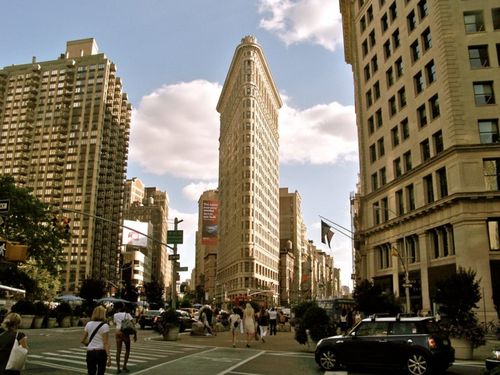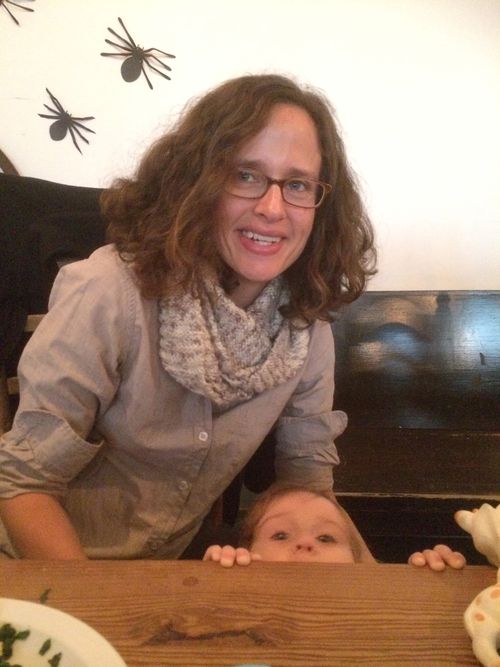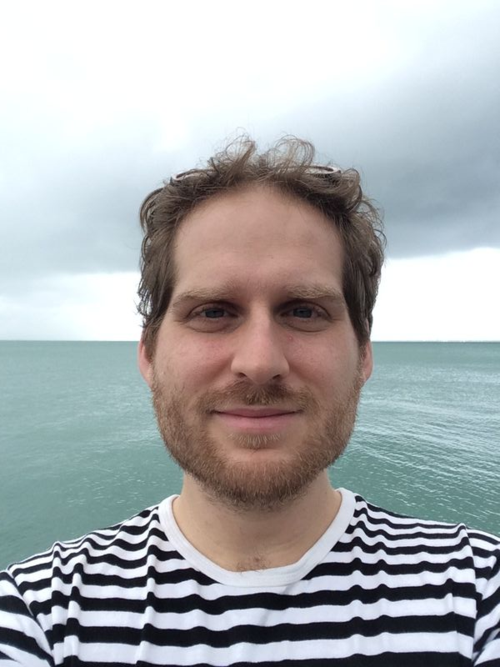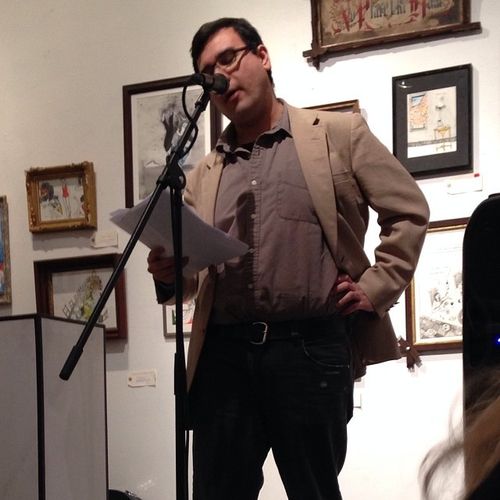
New York's Flatiron district, main street of Silicon Alley.
CITY JOURNAL
Winter 2014
Net Gains
by James Panero
Silicon Alley rises again.
Starting up in 2011 as a cross between a for-profit vocational school and a caffeinated tech clubhouse—with open co-working space mixed with classrooms, break rooms, and broadcasting studios—General Assembly now has campuses spanning nine cities on four continents, all offering a “pragmatic and multidisciplinary education at the intersection of technology, design, and business.” In New York, where it occupies two loft floors along the former Ladies’ Mile at 21st Street on either side of Broadway, GA is a feeder school for the city’s burgeoning tech industry. Much like the 34,000-member New York Tech Meetup, a nonprofit organization that hosts monthly events at New York University, and Techstars NYC, a mentorship and seed accelerator for new tech firms, GA seeks to strengthen network ties within the New York tech community, while providing an environment entirely unlike the sprawling office parks of Silicon Valley.
“What makes New York so interesting as a tech hub is that technology and design are now intersecting with so many different industries,” says Matthew Brimer, GA’s 27-year-old founding partner. “New York is already such a big commercial hub,” he says. “So many industries have amazing creative business talent. Take a place that is super dense with these different types of talent, bring those people together, and they can start to transform these different industries—that’s a perfect petri dish for interesting stuff to happen.”
Gotham’s tech sector keeps finding ways to make interesting stuff happen, showing surprising resilience even as the New York economy has had its ups and downs during the Bloomberg years. Since 2007, billions of dollars have poured into New York’s “Silicon Alley,” which recently vaulted ahead of the greater Boston area to become the nation’s second-largest tech hub behind California’s Silicon Valley. For a city that has long relied on its financial industry to spur growth and innovation, the resurgence of the tech sector is welcome news.
In just a few years, “New York’s tech sector has emerged as an increasingly powerful economic driver for the city,” wrote authors Jonathan Bowles and David Giles in “New Tech City,” a May 2012 report for the Center for an Urban Future. “At a time when few other industries were growing in New York, more than a thousand new tech start-ups were formed in the city.” This influx of capital and tech talent has pumped new life into New York City’s economy. Data from the New York City Economic Development Corporation (EDC) showed that there were 90,273 people working at 7,147 high-tech companies in New York in 2010—a 30 percent increase from 2005. Using the Bloomberg Technology Summit’s broader definition of a “tech/information sector,” New York has 262,000 workers in the industry, accounting for $30 billion in wages—and the sector added 11,000 workers in 2012.
According to a MoneyTree report published by PricewaterhouseCoopers and the National Venture Capital Association, the New York area also saw a 32 percent jump in venture-capital deals from 2007 to 2011—the only increase for any U.S. region. Some of these start-ups have already been acquired by larger firms; the microblogging platform Tumblr, for example, founded in 2007 and based on East 21st Street, gained $125 million in funding before being purchased last year by Yahoo for $1.1 billion. Others continue to raise funds as private companies: the online retailer Fab.com, founded in 2010 and based in Greenwich Village, has raised $336 million; the online shopping club Gilt Groupe, founded in 2007 and based in Midtown South, raised $221 million; the online medical-scheduling service ZocDoc, founded in 2007 and based in SoHo, raised $95 million; the location-based social-networking site Foursquare, founded in 2009 and based in SoHo, raised $112 million; and the arts and crafts commerce platform Etsy, founded in 2005 and based in Dumbo, raised $91.7 million. Chelsea-based virtual-journalism firm BuzzFeed raised $46 million.
It’s not the first time that tech has surged in New York, but this new crop of tech entrepreneurs is making smart use of an old tool—the brick-and-mortar density that has nurtured entrepreneurship in the city since the early eighteenth century. The urban experience promotes unplanned encounters, often resulting in a mutually enriching phenomenon known as “knowledge spillover.” Multiple industries tie into the city’s tech revival: advertising, fashion, publishing, retail, art and culture, finance, and food constantly retool their traditional businesses with online technology. Unlike the hardware and computational focus of West Coast tech, Silicon Alley is focused on exploiting synergies among the entrepreneurs, artists, developers, and dreamers who live and work in the Big Apple.
Today, the tech landscape is different from in the 1990s, in ways that favor New York City’s native strengths. In the past, Silicon Alley relied heavily on expensive traditional advertising campaigns to sell products that often required millions of dollars—for everything from server racks to programmers—just to get up and running. But many of the components that start-ups need today are readily available, in part because the commercial Internet has evolved since those pioneering early days. Coding can be done remotely, with work bid out to programmers in India and former Eastern Bloc nations. Inexpensive, off-the-shelf solutions exist for a variety of once-costly and challenging problems. A viable app can be created in weeks for under six figures. Indeed, apps, which provide virtual solutions to real-world problems, neatly illustrate New York’s trademark blend of creativity, commerce, and technology. It’s no surprise that apps have been a particular focus of this latest iteration of Silicon Alley.
For years, critics have predicted that technology—particularly communications technology—would replace the face-to-face interactions that city life facilitates. Yet in a 1996 paper for the National Bureau of Economic Research, Jess Gaspar and Edward Glaeser (a City Journalcontributing editor) showed how historical advances in communications technology have, in fact, increased the need for direct human contact. The telephone, for example, extended a person’s network of connections, which, in turn, fed the need for more face-to-face interactions. Further improvements to communications technology, Gaspar and Glaeser concluded, would foster ever-larger networks, leading to ever more face-to-face exchanges. These days, technological advances have cut down on development costs and vastly expanded connectivity, and what Gaspar and Glaeser prophesied in 1996 is coming to pass in Silicon Alley.
Indeed, if the nineteenth century saw New York mapped out in two dimensions, through the Commissioner’s Plan of 1811, and the twentieth century saw New York take on a third dimension, through the development of the skyscraper, the twenty-first century, through the Internet, is rapidly mapping Gotham into a fourth, virtual dimension. New York’s latest generation of tech entrepreneurs has found success by extending the city’s real-world, three-dimensional space into an increasingly complex network, where real, virtual, and mobile density all integrate together.
Departing mayor Michael Bloomberg deserves credit for helping to expand New York’s tech economy. During his three terms in office, he made improving technology education a priority. “Since the 2008 financial crisis, no other industry has enjoyed more attention from the Bloomberg administration than tech,” wrote Bowles and Giles. The EDC has supported tech incubators and shared work spaces from the Bronx to Brooklyn. In 2011, Bloomberg named Rachel Sterne Haot New York’s first chief digital officer to oversee the city government’s web accessibility and serve “as an advocate for the digital media industry.” Bloomberg himself was one of New York’s original tech successes. In 1981, he was forced out of his position as a general partner at the investment bank Salomon Brothers. With his severance package, he set up a company to sell high-quality business information to Wall Street via computer technology. In 1987, his Innovative Market Systems became Bloomberg L.P.
The Bloomberg administration’s biggest investment in the city’s future as a tech hub occurred in 2012, when it awarded $100 million and 11 acres on Roosevelt Island to Cornell University and the Technion–Israel Institute of Technology to build a 2 million-square-foot campus called Cornell NYC Tech. Construction is scheduled to begin this year and will continue through 2037, according to Cornell, with the campus opening in 2017. At full capacity, by 2043, the campus will have room for 2,500 graduate students taught by a 280-person faculty. The city has also announced plans for a new tech campus for NYU in downtown Brooklyn. It broke up the failing Paul Robeson High School in Crown Heights to create the Pathways in Technology Early College High School (P-TECH), a partnership between the Department of Education, City University, and IBM that offers a six-year curriculum for high school students, leading to an associate’s degree in applied science and an inside track to employment at IBM. And the city has partnered with the venture capitalist Fred Wilson to create a new Academy for Software Engineering inside the failing Washington Irving High School, one block from Union Square. This past year, 1,400 high school students applied for its 125 slots. The city is rapidly developing an additional Academy for Software Engineering in the Bronx and rolling out a pilot program in 20 middle schools and high schools, offering computer-science classes in coding, web design, and 3-D printing.
Ensuring the health of New York’s maturing tech industry will require strengthening the city’s real-world Internet infrastructure and tech “ecosystem,” say tech-industry leaders. They want to see improvements to the city’s broadband pipes and, in general, a New York more fully integrated into the tech economy. New York’s lackluster broadband infrastructure is limiting growth in outer-borough neighborhoods. “Look at Kansas City, where they’ve got Google Fiber,” says tech entrepreneur Jack Hidary, referring to Google’s initiative to lay the pipelines for an Internet 100 times faster than cable-modem broadband. “It is a great case study, and has seen a tremendous influx of entrepreneurship. The lesson we need to learn from that is that broadband needs to be available across the five boroughs, not just in Midtown Manhattan.”





